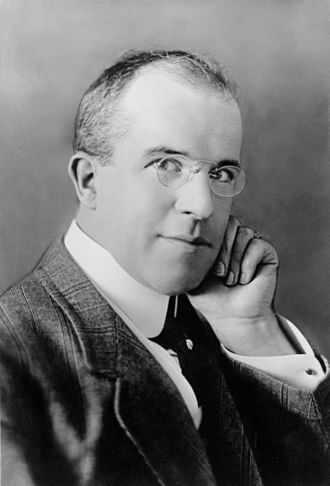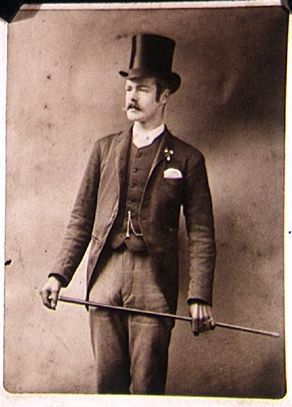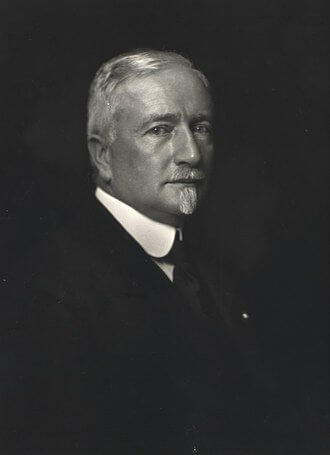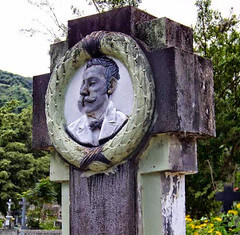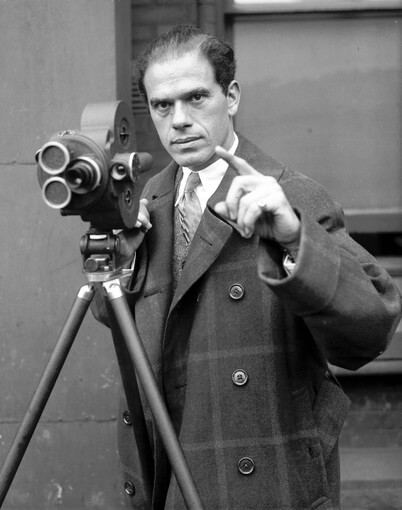The Year 1897 in Film: The Debuts of Vitagraph, Mitchell & Kenyon, Denmark and Venezuela
0This is a work in progress as I am still researching the year 1897 in film. I’ve added 766 films to my index so far whereas IMDb has 1,358 entries. I think I may have, however, found most of the surviving films. Conclusions drawn will be based on the data I’ve gathered so far and this article will be revised as my research continues.
Out of those 766 films, 551 were produced in France, and 476 of those by the Lumière Brothers, the leading film production company worldwide in the 1890s. There are 16 films released by Pathé frères, 39 by Georges Méliès, 8 by Gaumont, 4 by Ernest Normandin, 3 by Parnaland Frères, 3 by Albert Kirchner and 1 by Paul Nadar So far the USA is in second place with 174 films, 137 of which were released by the Edison Manufacturing Company and 31 by the American Mutoscope Company. The remaining films were released by the International Film Mfg. Company (3), Siegmund Lubin (1), Klaw & Erlanger (1), and William Brady (1).
There are 27 films from the UK, 6 from the British Mutoscope & Biograph Company, 7 from George Albert Smith Films and 14 from Paul’s Animatograph Works (R.W. Paul). So far I have one film from Argentina, three from Denmark by Peter Elfelt, the first films produced there, one from Germany, seven from Italy. Venezuela also began producing film in 1897 and so far I have one of them in my index.
My YouTube playlist contains 281 films, 4 of those are incomplete. Another, Hanging Out the Clothes, may only be viewed on BFI Screenonline which is limited to libraries, colleges and universities in the UK. Of the remaining 485 films in my index 32 are held in the Library of Congress Paper Print Collection that haven’t been digitized and made available for viewing, 337, all from the Lumière Brothers, are held by the Centre national du cinéma et de l’image animée (CNC), 1 is held by the George Eastman Museum, 1 by the Danish Film Institute, 1 by the Library of Congress, 2 by the Museum of Modern Art, 4 by the National Archives of Canada, 1 by the Irish Film Archive, 1 by the Lobster Film Archive and 104 films are presumed lost (this number will certainly grow as my research continues).
Significant Events of the Year in the Film Industry
USA
J. Stuart Blackton and Vitagraph Studios
James Stuart Blackton (1875-1941) emigrated with his family to the United States from England in 1885. A natural talent for drawing found him a place on the staff of the New York World, writing and drawing a regular illustrated feature on personalities in the news. At this time Blackton was making regular stage appearances as a cartoonist in the company of conjurer Albert Smith (1875-1958), and in the summer of 1896 they were performing at a New York World Sick Baby Fund benefit concert, which was filmed by the Edison company. Blackton was the hit of the concert and in August 1896 he was hired to make three 150-foot films in Edison’s Black Maria studio: Humorous Cartoon, Political Cartoon (caricaturing William McKinley and President Grover Cleveland), and Sketching Mr. Edison, which was also released as Edison Drawn by World Artist. The romantic story that he went to sketch Thomas Edison for the World and so impressed the inventor that he was chosen for filming is untrue. The three films were first shown at Proctor’s Pleasure Palace on 12 September 1896, and the film of Edison in particular brought Blackton fame and encouraged his entry into the film business. A year later, Blackton and Smith founded the American Vitagraph Company in direct competition with Edison. A third partner, distributor William “Pop” Rock, joined in 1899. The company’s first studio was located on the rooftop of a building in Manhattan. Operations were later moved to Brooklyn, New York.
During this period, J. Stuart Blackton ran the Vitagraph studio, and produced, directed, and wrote its films. He even starred in some of his films, playing the comic strip character “Happy Hooligan” in a series of shorts. Since profits were constantly increasing, Blackton felt that he could try any idea that sprang to his head, and in a series of films Blackton developed the concepts of animation. The first of his animation films is The Enchanted Drawing (1900). In this film, Blackton sketches a face, a bottle of wine and a glass, a top hat, and a cigar. During the film he appears to remove the wine, glass, hat, and cigar as real objects, and the face appears to react. The “animation” here is of the stop-action variety, where the camera is stopped, a single change is made, and the camera is then started again. The process was first used by Georges Méliès and others.
The transition to stop-motion was apparently accidental, and occurred around 1905. According to Albert Smith, one day the crew was filming a complex series of stop-action effects on the roof while steam from the building’s generator was billowing in the background. On playing the film back, Smith noticed the odd effect created by the steam puffs scooting across the screen and decided to reproduce it deliberately. A few films (some of which are lost) use this effect to represent invisible ghosts, or to have toys come to life. In 1906, Blackton directed Humorous Phases of Funny Faces, which uses stop-motion as well as stick puppetry to produce a series of effects. After Blackton’s hand draws two faces on a chalkboard, they appear to come to life and engage in antics. Most of the film uses live action effects instead of animation, but nevertheless this film had a huge effect in stimulating the creation of animated films in America.
In Europe, the same effect was had from The Haunted Hotel (1907), another Vitagraph short directed by Blackton. The Haunted Hotel was mostly live-action, about a tourist spending the night in an inn run by invisible spirits. Most of the effects are also live-action (wires and such), but one scene of a dinner making itself was done using stop-motion, and was presented in a tight close-up that allowed budding animators to study it for technique.
Blackton believed that the US should join the Allies involved in World War I overseas and in 1915 produced The Battle Cry of Peace, (presumed lost). Former President Theodore Roosevelt was one of the film’s staunchest supporters and convinced Gen. Leonard Wood to loan Blackton an entire regiment of marines to use as extras. Upon its release, the film generated a controversy rivaling that of The Birth of a Nation because it was considered as militaristic propaganda.
Blackton left Vitagraph to go independent in 1917, but returned in 1923 as junior partner to Albert Smith. In 1925, Smith sold the company to Warner Brothers for more than $1 million. Blackton did quite well with his share until the Stock Market Crash of 1929, which destroyed his savings and made him bankrupt in 1931. He spent his last years on the road, showing his old films and lecturing about the days of silent movies. Blackton died August 13, 1941, a few days after he suffered a fractured skull after being hit by a car while crossing the street with his son. At the time of his death he was working for Hal Roach on experiments to improve color process backgrounds.
UK
Mitchell & Kenyon
The firm of Mitchell & Kenyon, founded in Blackburn in 1897 by Sagar Mitchell and James Kenyon, released films under the trade name of Norden and were one of the largest British film companies in the 1900s, producing a mixture of topicals, fiction and ‘fake’ war films. Before their arrival in the world of early filmmaking, Mitchell ran the family photographic apparatus business with his father and Kenyon operated a penny-in-the-slot machine manufacturing company. Until recently the company was more famous for its dramatized war films, ten of which were known to have survived and included titles such as The Dispatch Bearer (1900), Winning the V.C. (1900) and Attack on a Mission Station (1900). However, the discovery of approximately 800 negatives in the original premises in 1994 by Peter Worden and their acquisition by the British Film Institute in 2000, has led to a major revaluation of their contribution to film making in the United Kingdom.
Mitchell & Kenyon’s association with traveling showmen first occurred in April 1899, when George Green, commissioned them to film workers leaving local factories in Blackburn to be shown at the Easter fair. The company filmed scenes of local interest, including factory gate films, sporting events, processions and phantom rides through town centers in the North of England. They came to national prominence in September 1899 with the release of three Norden film titles The Tramp’s Surprise, The Tramps and The Artist and Kidnapping by Indians.
With the outbreak of the Boer War in October 1899, the company turned to the production of war films of events in the Transvaal and the Boxer rebellion in China. These were filmed in the countryside around Blackburn and consisted of fictionalized scenes of events from the battlefronts. The films were available direct from the manufacturers but were also distributed by Gaumont, Walturdaw and Charles Urban, who advertised A Tragic Elopement in November 1903. By 1901 the company was selling factory gate and other non-fiction titles to traveling exhibition companies, of which thirty-eight are represented in the Peter Worden collection. These include A.D. Thomas, who presented films under the banner of Edison-Thomas Pictures, New Century Pictures under the ownership of Sydney Carter, Ralph Pringle of the North American Animated Photo Company and George Green. Their geographical range encompassed the North and North West of England, Glasgow and Dundee in Scotland, North Wales, the Midlands and Bristol and Portsmouth in the South West, with the largest percentage of titles relating to Lancashire and Yorkshire.
Fiction production was not as copious as their non-fiction output, but by 1903 their premises in Clayton Street included an outdoor studio and they also filmed on location. Sixty-five fiction titles are now preserved in the Cinema Museum, London, including Diving Lucy (1903), billed in the United States as the ‘biggest English comedy hit of the year’, and five by Lobster Films of Paris. Approximately 800 non-fiction titles form the Peter Worden Mitchell & Kenyon Collection at the British Film Institute. The discovery and preservation of this material reveals a pattern of commissioning and exhibition that existed between film companies and early traveling exhibitors in the early 1900s. The films were either commissioned, purchased or sent to Mitchell & Kenyon to be developed and printed and shown by the exhibitors in temporary venues in the locality, including music halls, fairground cinematograph shows and town halls. Visits by Lord Roberts and General Buller, Lord Kitchener, Baden Powell and other well known personalities to Manchester, Liverpool for example were captured on film and exhibited in the same evening. Local processions, football matches and rugby matches were also popular features.
Throughout the 1900s, Mitchell & Kenyon continued to film local scenes and to produce fiction titles such as Black Diamonds – the Collier’s Daily Life (1904) and the comedy The Interrupted Picnic (1906). One of their most innovative titles was the Arrest of Goudie (1901) commissioned by Ralph Pringle of the North American Animated Photo Company in Liverpool. The film was shot incorporating the actual crime locations and depicts the arrest of Thomas Goudie, an employee of the Bank of Liverpool who embezzled £170,000 to pay of his gambling debts. It was exhibited three days after Goudie’s arrest in December at the Prince of Wales Theatre in Liverpool. By 1904 they were referred to as one of the leading film manufacturers in the country by the trade press. They continued to film local events for the showmen including a visit to Glasgow in 1906 on behalf of New Century Pictures and factory gate titles from Yorkshire in 1908. However, by 1909 Mitchell & Kenyon appear to have restricted their activities to Blackburn and its surrounding locality. Their last surviving titles are between 1911 and 1913. Although the company continued to be listed under the ownership of both men until 1915, no films have been found from this period. James Kenyon retired to Southport in 1915 leaving Mitchell to run his separate photographic business in Blackburn. Kenyon returned to Southport in the early 1920s and the partnership was dissolved in 1922. James Kenyon died 6 February 1925 and Sagar Jones Mitchell died aged 85, 2 October 1952.
–Vanessa Toulmin Who’s Who of Victorian Cinema
Denmark
Peter Elfelt
Peter Elfelt was born Peter Lars Petersen in Denmark on 1 January 1866. (He changed his name to Elfelt when he began making films.) He apprenticed in photography in Hillerød in 1893 with the photographer Carl Rathsack. He also studied with the camera builder Jens Poul Andersen. In 1893, Elfelt opened his own atelier in Copenhagen with his two brothers as his assistants. As his photographic skills became appreciated, his business flourished and by 1901 Elfelt was named “Kongelige Hoffotograf” (Royal Court Photographer).
During a trip to Paris in 1896, Elfelt obtained a set of detailed Cinematographe plans from the French inventor Jules Carpentier. He had a film camera constructed by Jens Poul Andersen. In the beginning of 1897, he shot the first Danish film – a one-minute sequence called Kørsel med grønlandske hunde (Driving with Greenland Dogs). During the following 15 years, he made short nature films and newsreels about the Danish royal family. Elfelt shot almost 200 short films in all.
In 1903 Elfelt filmed his only drama. The short film, Henrettelsen (Capital Execution), was the first fiction film made in Denmark. Based upon the actual execution of a French woman who murdered her two children, it starred the singer Francesca Nathansen and was filmed in the arcade of the Christiansborg Castle. There is some doubt whether the film was ever shown in public. When Elfelt was asked in 1926 if he had ever filmed a drama, he remembered being reluctant about this film.
Elfelt opened the “København Kinoptikon” movie theater in 1901. Although Elfelt was Denmark’s first pioneer of filmmaking, he considered film as secondary to his work as a photographer. Elfelt died on February 18, 1931. – Adapted from Wikipedia
Venezuela
The first time films were shown in Venezuela was on July 11, 1896 at the Baralt Theatre in Maracaibo. The exhibition was facilitated by entrepreneur Luis Manuel Méndez, who had travelled to New York City in June 1896 and acquired a Vitascope, as well as licenses to use it for profit in both Venezuela and Colombia. This made Venezuela the second country in Latin America (after Brazil) to receive film screening technology, and the first to use the Vitascope. The films shown included Edison films The Monroe Doctrine and Umbrella Dance. Six months later in January 1897 the first films to be produced in Venezuela were shown at the same cinema; these were Un célebre especialista sacando muelas en el gran Hotel Europa and Muchachos bañándose en la laguna de Maracaibo. The director of these films is unknown; scholars and researchers have suggested that the most likely people to be the director are Manuel Trujillo Durán, a photographer from Maracaibo, or Gabriel Veyre, one of the team of Lumière cameramen who took the Cinématographe around the world.
Carlos Ruiz Chapellín (1865-1912), Venezuelan showman, filmmaker and performer rented the Circo Metropolitano in Caracas in 1897, shortly after it opened. He would show zarzuelas (a Spanish lyric-dramatic genre that alternates between spoken and sung scenes) and circus variety shows. He also planned to go into the film business after the release of the first Venezuelan films in Maracaibo, forming a partnership with Ricardo Rouffet to create their own films. He also hired a man, W.O. Wolcopt from the United States, as part of this venture. Wolcopt brought a Projectoscope from New York, which was displayed in the Circo from 26 June to 14 July 1897. After the show Wolcopt traveled the country for four months with the Projectoscope before returning to Caracas.
Ruiz then hired Gabriel Veyre to show his Cinematograph at the Circo after seeing him project another film at the Fortuna Hall in Caracas. Ruiz and Veyre had a dispute, with Ruiz claiming Veyre was in breach of contract and sent a letter saying so to Veyre’s mother. Veyre fled the country to Colombia, but his Cinematograph, which could both record and project film, may have been used to make Ruiz’s films. Ruiz briefly returned to films in 1899, before going back to his production business. He devoted himself to writing in his later life.
– Adapted from the Wikipedia article Cinema of Venezuela.
Births
Many famous actors, one famous director and one famous costume designer were born in 1897.
January 3 – Marion Davies, actress (d. 1961)
January 3 – Pola Negri, actress (d. 1987)
February 10 – Judith Anderson, actress (d. 1992)
May 18 – Frank Capra, director (d. 1991)
June 19 – Moe Howard, actor (d. 1975)
July 10 – John Gilbert, actor (d. 1936)
August 31 – Fredric March, actor (d. 1975)
September 23 – Walter Pidgeon, actor (d. 1984)
October 28 – Edith Head, costume designer (d. 1981)
See Wikipedia for the complete list.
The Playlist
The films are arranged in chronological order of release date but films for which the month and day of release cannot be determined appear at the beginning of the playlist in alphabetical order. The total running time of the playlist is three hours, 23 minutes. Click on “Watch on YouTube” to see all 281 films.
Next article in this series: The Year 1905 in Film.
Previous article in this series: The Year 1896 in Film.

